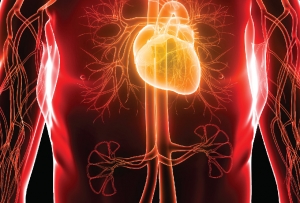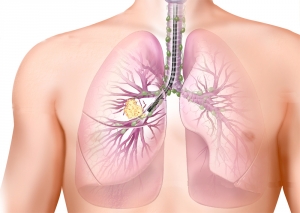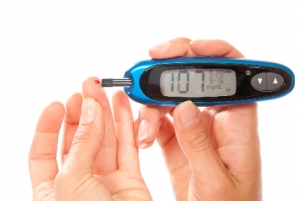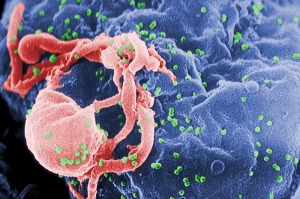Elijah Artman
Approximately 40% of the world population and almost one in three adults in the US have high blood pressure, which in individuals with additional genetic predisposition to heart disease greatly increases their risk of heart attacks and stoke. According to the World Health Organization, heart disease contributes to 17 million deaths worldwide each year, including 4 million deaths in Europe and 600,000 in the US.
Despite ever increasing prescriptions for high blood pressure and cholesterol reducing medications, cardiovascular disease is expected to increase to 40% by 2030. This is because conventional medicine does not address the root causes of these conditions, but focuses instead on the mechanical lowering of blood pressure or cholesterol readings with highly profitable drugs.
Lung cancer, the most common cause of death from cancer worldwide, was responsible for nearly one in five (1.38 million) cancer deaths in 20081. In 2012, about 1.8 million new lung cancer cases were diagnosed.
Current therapies are ineffective, highly toxic, and over half of all patients die within one year of being diagnosed. The five-year survival rate of only 3.5% has not improved over several decades. There is therefore an urgent need to change the direction in cancer research and develop new, original and safer approaches.
Connective tissue is the most abundant type of tissue in our body. The shape and form of the body, including its organs, muscles, bones, and cartilage, are determined by the properties of connective tissue. Skin, blood, blood vessels, adipose tissue (fat cells), tendons, ligaments, and teeth are various examples of connective tissue. Therefore, the term “connective tissue diseases” encompasses a wide range of ailments; some of them are inherited, while others develop as autoimmune diseases due to excessive inflammation. Examples of autoimmune connective tissue diseases are scleroderma, lupus, rheumatoid arthritis, vasculitis (inflammation of blood vessels), mixed connective tissue diseases, etc.
According to a recent study published in The Lancet medical journal, the number of people diagnosed with diabetes has increased four times in the past 35 years1. There were 108 million people diagnosed with diabetes in 1980 and 422 million in 2014. Based on this alarming statistical finding, the World Health Organization (WHO) selected diabetes as the theme for World Health Day 2016 in order to raise awareness and to prevent and effectively manage diabetes.
Athletes focus on increasing stamina, reducing muscle fatigue and injuries, and maximizing performance. While they recognize the role of macronutrients such as proteins, carbohydrates, fats, and other healthy foods, the importance of micronutrients is often neglected. Insufficiency of micronutrients frequently leads to easy fatigue, muscle or bone injury, and other ailments like arthritis. An intense exercise routine and increased metabolic turnover makes micronutrient supplementation essential for athletes.
Globally, resistance to treatment with antimicrobial drugs is becoming an increasingly serious public health problem. Antimicrobial resistance is a larger phenomenon than antibiotic resistance. In addition to drug resistant bacteria, the antimicrobial resistant species also include other drug resistant microbes such as fungi, parasites, and viruses. According to the World Health Organization (WHO), 480,000 new cases of multi drug resistant tuberculosis (XDR-TB) were diagnosed in 2013. Other disease causing and highly virulent organisms that have already developed drug resistance are malarial parasites, the fungus Candida, methicillin-resistant-Staphylococcus aureus (MRSA), and the bacteria causing gonorrhea. The drug resistant bacteria are estimated to cause 99,000 deaths in U.S. hospitals every year.
After heart disease, cancer is the second leading cause of death worldwide. One in two men and one in three women will be diagnosed with some type of cancer in their lifetime. Despite novel initiatives, the American Cancer Society estimates that by 2020 the number of new cancers will increase to more than one million cases per year in men, and more than 900,000 cases per year in women. Melanoma, lung, breast, and prostate cancer are the most commonly diagnosed among the new cancers. Although cigarette smoking - the most common risk factor for cancer - still remains high, obesity and other metabolic disorders can contribute to and increase breast, colon, uterus, pancreas, and kidney cancers.
Cardiovascular diseases, including heart attacks and strokes, continue to be the leading causes of deaths resulting in more than 17 million deaths each year worldwide. Cardiovascular disease (CVD) manifests as atherosclerosis, high cholesterol, high blood pressure, arrhythmia, and heart failure and has many more symptoms affecting the heart and blood vessels. Additionally, other metabolic diseases such as obesity and diabetes further increase the risk of CVD.
Influenza (flu) is a common viral disease affecting up to 20% of the world’s population. In most cases, the flu is benign, but it can also have serious consequences especially in people with compromised immune systems, the elderly, and children. It is estimated to cause 250,000 to 500,000 deaths worldwide each year1.
The flu virus easily spreads through the air or by direct contact. In most cases, simple measures such as frequent hand washing and good nutrition are effective in preventing the flu. However, every year media fuelled campaigns promote influenza vaccination as the best protection against the flu. The influenza vaccine global market generates close to $3 billion a year and it is estimated to reach $4.2 billion by the end of 2014. Despite aggressive marketing it has been difficult to prove the efficacy of the flu vaccine since the flu virus frequently mutates (changes) and resistance to the vaccines is very common.
Acquired immune deficiency syndrome (AIDS) has become a worldwide epidemic and health threat. In 2012, about 34 million people worldwide were living with HIV, the human immunodeficiency virus linked to AIDS. In the US, 1.2 million people are infected with HIV with 50,000 new infections occurring every year. The World Health Organization (WHO) estimated that about 2.2 million new HIV infections occurred globally in 2012.









